Carbon dioxide
Type of resources
Topics
Keywords
Contact for the resource
Provided by
Years
Formats
Representation types
Update frequencies
Scale
-

This dataset comprises ECLIPSE input decks for a 3D reservoir simulation of the CO2 plume at the Sleipner CO2 injection site. This whole reservoir model is an attempt to history match the growth of the plume observed on seismic data. A seismic velocity and density model derived from the 3D reservoir simulation is also included, together with a series of Seismic Unix scripts to create a synthetic seismic section through the Sleipner reservoir model, for comparison with released time-lapse seismic data.
-
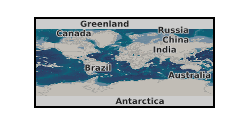
The supporting data for C. Harris et al., 2021, 'The impact of heterogeneity on the capillary trapping of CO2 in the Captain Sandstone', International Journal of Greenhouse Gas Control. We supply experimental and numerical simulation data used in the paper. The supplied codes reproduce each figure. The codes are split into 2 folders, descriptions of each of the folders are given below: 0 - README. This contains detailed instructions on using the supplied files. 1 - Main simulations. This contains the code to produce the main CMG (Computer Modelling Group) simulations outlined in the paper, with various input variable files. 2 - Other figures. This contains the code to produce other figures within the paper which do not rely on numerical simulations, including the experimental data.
-
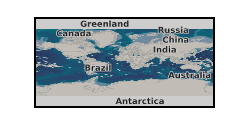
UKCCSRC Flexible Funding 2020. The experimental data was collected on a 1-inch bore gas-liquid two-phase CO2 flow rig in real time. The first column of the table is the time stamp. The second to 19th columns are the mass flowrates, temperatures, densities and tube frequencies from Coriolis flowmeters installed on the gas phase section, liquid phase section, horizontal test section and vertical test section, respectively. The last column of the datafile is the reading from the differential pressure (DP) transducer installed across the Coriolis flowmeter on the horizontal test section. UKCCSRC Flexible Funding 2020: Monitoring of CO2 flow under CCS conditions through multi-modal sensing and machine learning.
-
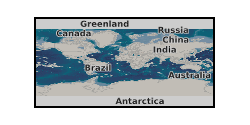
UKCCSRC Flexible Funding 2020. Experimental data are the acoustic emission (AE) signals collected with three AE sensors when CO2 leak from a CO2 storage cylinder under different pressures. '5MPa_20kgh-1' means the data was collected when the pressure was 5MPa and the leakage rate was 20 kg/h. The sampling frequency of AE signals is 3MHz. UKCCSRC Flexible Funding 2020: Monitoring of CO2 flow under CCS conditions through multi-modal sensing and machine learning.
-
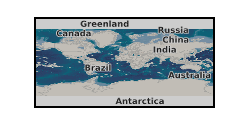
The data set encompasses the data generated through the 8 experimental runs on the 25 kWth calcium looping pilot plant at Cranfield University arranged into 8 functional Excel spreadsheets. The operational data are gathered by the acquisition with Labview software (the composition of the gas from the calciner and carbonator; temperatures of the electrical furnaces on the preheating lines and around the calciner; temperatures of the gas in the preheating lines and in the calciner) and Pico software (temperatures in the carbonator and lower loop seal and pressures in the calciner and in the carbonator). Moreover, the data from the experimental diary (inputs of gasses and solids into the rig) and the data from the post-processing of the extracted solids are included. All the data are combined into comprehensible charts that describe and explain the experimental runs together with the mass and energetic model of the system during steady state operations.
-

Late (0-250 ka) and middle (1050-1280 ka) Pleistocene boron isotope data from planktic foraminifera (Globigerinoides ruber) and oxygen isotopes data from benthic formainifera (Cibicidoides wuellerstorfi). Boron isotopes measured using multi-collector inductively coupled plasma mass-spectrometry (MC-ICPMS).
-
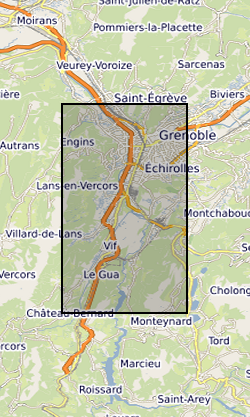
The Fontaine Ardente (FA) and Rochasson (ROC) natural gas seepage sites are located southwest (FA) and east (ROC) of Grenoble, France. For both field sites, gas is thought to originate from buried Middle Jurassic mudstones and argillaceous limestones and thought to migrate upward along small faults. At FA, the site located along a small seepage close to the river bed of a small creek. The gas seepage site at ROC is located along the flank of a thalweg and is linked to a small landslide in clayey horizons. New methane clumped isotope data is correlated to previously published data by Gal et al (2017) and recent isotopic data acquired within SECURe deliverable 3.4. During October 2019, 5 samples were collected from the FA and ROC sites and the following analyses were conducted: - Gas composition (C1-C5, CO2, N2, H2S, Ar) and and stable isotope analyses (methane δ13C and δD, CO2 δ13C, δ15N) - Methane clumped isotope analyses (Δ13CD and ΔDD) The dataset was created within SECURe project (Subsurface Evaluation of CCS and Unconventional Risks) - https://www.securegeoenergy.eu/. This project has received funding from the European Union’s Horizon 2020 research and innovation programme under grant agreement No 764531
-
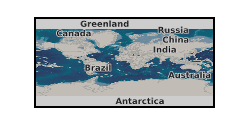
This study was carried out jointly by the University of Birmingham and the British Geological Survey. The report addresses the feasibility of using novel quantum-technology-based gravity sensors to monitor underground CO2 storage. Of particular interest is the applicability to upcoming near-surface leak monitoring trials that the British Geological Survey will be conducting at its test site. UKCCSRC Flexible Funding 2021: Feasibility study into Quantum Technology based Gravity Sensing for CCS
-
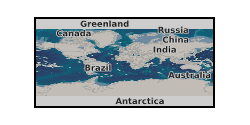
This dataset gathers the data collected during a brine:CO2 flow-through experiments conducted on three sandstones with similar mineralogical compositions (major minerals) but different porosity, clay-size fraction and clay mineralogy. The aim was to study the effect of such heterogeneities on interpretation of geophysical data. Geophysical and transport data were collected before, during and after exposing each sample to CO2, and analysed with basic petrophysical properties. The tests were conducted in the high-pressure, room-temperature (20°C) experimental setup for multi-flow-through tests in the Rock Physics Laboratory at the National Oceanography Centre, Southampton (NOCS), during 2022, as part of the OASIS, EHMPRES and FOCUS projects with funding from the Research Council of Norway (RCN grant no. 280472 - OASIS) and the Natural Environment Research Council (NERC grants NE/X003248/1 - FAPESP-EHMPRES, and NE/X006271/1 - FOCUS). To simulate the specific effective stress conditions of the target CO2 storage reservoir in Aurora (Aker et al., 2021), northern North Sea, the confining and pore pressure conditions of the reservoir were accommodated to our lab temperature conditions. We measured ultrasonic P- and S-wave velocities and attenuations, axial strains and electrical resistivity for an increasing CO2 saturation. The degree of brine saturation was inferred from the electrical resistivity using the modified Archie’s empirical relationship to account for the contribution of clay minerals, based on the Waxman–Smits–Juhasz model (see further details in, e.g., Falcon-Suarez et al. (2021)). We refer to Falcon-Suarez et al. (2020) for further information about the experimental rig and the CO2 injection protocol.
-
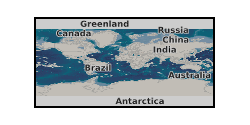
Isotope tracing data for 14C, 15N and 33P tracing between plants and symbiotic fungi in Lycopdiella inundata, Anthoceros and Phaeoceros sp. and Lunularia cruciata. All plants tested and traced in atmospheric CO2 conditions of 440 ppm [CO2] and 800 ppm [CO2]. Datasets includes total mass of plants and soils, Bq in each component of experimental systems and values in Bq and mg where appropriate.
 BGS Data Catalogue
BGS Data Catalogue